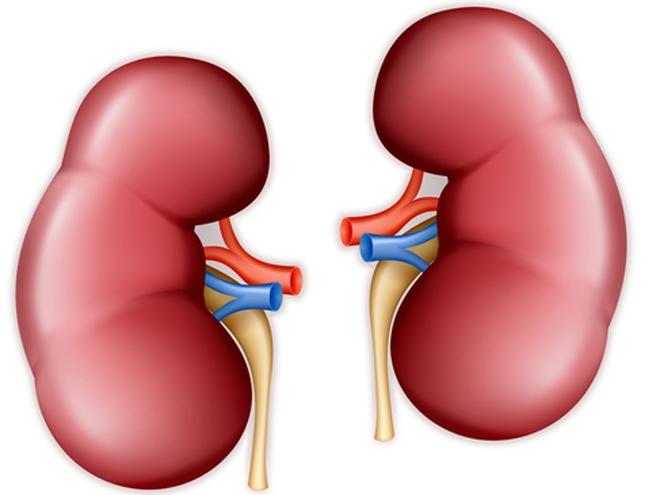
Worldwide, hypertension remains the greatest contributor to morbidity and mortality. The prevalence of hypertension increases with age; much of the morbidity and mortality associated with hypertension occurs in older individuals. Effective pharmacotherapy has eased the health burden of uncontrolled hypertension. The efficacy of thiazide diuretics in lowering blood pressure and reducing cardiovascular events is well documented. According to Cedric Edwards, MD, and colleagues, there are few data available on whether a specific thiazide is preferable in terms of safety and efficacy.
The most widely prescribed thiazide in North American is hydrochlorothiazide, which is shorter-acting and less potent per milligram than chlorthalidone. Head-to-head studies of those two agents have demonstrated mixed results. Older studies indicated that chlorthalidone was superior in blood pressure control and reduction of cardiovascular events. However, more recent studies have shown equivalency in cardiovascular risk reduction but an increased risk of adverse kidney outcomes and hypokalemia with chlorthalidone.
Patients with chronic kidney disease (CKD) have high rates of hypertension, more than 80%, including 50% who require three or more antihypertensive medications. Results of recent studies of thiazides have suggested effectiveness in this patient population. There are few data available on comparisons of chlorthalidone and hydrochlorothiazide in individuals with CKD. Dr. Edwards et al. conducted a large population-based cohort retrospective study of older adults to compare the safety and clinical outcomes associated with chlorthalidone versus hydrochlorothiazide use across levels of kidney function. Results were reported online in JAMA Network Open [doi:10.1001/jamanetworkopen.2021.23365].
The study was conducted on Ontario, Canada, from 2007 to 2015, and included adults ≥66 years of age who initiated chlorthalidone or hydrochlorothiazide during the study period. Data analysis was conducted from December 2019 through September 2020.
New chlorthalidone users were matched 1:4 with new hydrochlorothiazide users by a propensity matched score. The associations between use of chlorthalidone versus use of hydrochlorothiazide and the outcomes of interest overall and within estimated glomerular filtration rate (eGFR) categories (≥60, 45-59, and <45 mL/min/1.73 m2) were examined using time-to-event models accounting for competing risks.
The outcomes of interest were adverse kidney events (≥30% decline in eGFR, dialysis, or kidney transplantation), cardiovascular events (composite of myocardial infarction, coronary revascularization, heart failure, or atrial fibrillation), all-cause mortality, and electrolyte anomalies (sodium or potassium levels outside reference ranges).
Following high-dimensional propensity score (HDPS) matching, the analysis cohort included 12,722 adults, mean age 74 years, 56% of whom were women (n=7063), and mean eGFR was 60 mL/min/1.73 m2. Of the 12,722, 2936 had a newly dispensed prescription for chlorthalidone and 9786 had a newly dispensed prescription for hydrochlorothiazide. Rates of angiotensin-converting enzyme inhibitors were higher among participants in the chlorthalidone group, as were rates of use of calcium channel blockers and nephrological care. Participants in the hydrochlorothiazide group had higher rates of angiotensin receptor blocker use. Both chlorthalidone and hydrochlorothiazide were more commonly prescribed as add-on therapy (chlorthalidone: 90% [n=2647]; hydrochlorothiazide: 93% [n=9050]) rather than as monotherapy.
There was an association of a higher risk of decline in eGFR of ≥30% with chlorthalidone use compared with hydrochlorothiazide use (128 events per 1000 person-years [95% confidence interval (CI), 118-138] versus 93.7 events per 1000 person-years [95% CI, 89.3-98.1]; hazard ratio [HR], 1.24; 95% CI, 1.13-1.36). There was no modification associated with eGFR category in the association of chlorthalidone or hydrochlorothiazide use with decline in eGFR ≥30%. There was no significant difference in the risk for dialysis or kidney transplantation between chlorthalidone and hydrochlorothiazide use (4.75 events per 1000 person years [95% CI, 3.08-6.42] vs 2.29 events per 1000 person-years [95% CI, 1.69-2.90]; HR, 1.44; 95% CI, 0.88-2.36). There was no modification of association by eGFR category.
There was an association between chlorthalidone use and a higher risk of cardiovascular events compared with hydrochlorothiazide use (160 events per 1000 person-years [95% CI, 150-171] vs 128 events per 1000 person-years [95% CI, 123-133]; HR, 1.12; 95% CI, 1.04-1.22). The association was not modified by eGFR category.
The groups were statistically similar in all-cause mortality: 30.5 events per 1000 person-years (95% CI, 26.3-34.8) in the chlorthalidone group and 24.7 events per 1000 person-years (95% CI, 22.8-26.7). However, among patients with eGFR of ≥60 mL/min/1.73 m2, there was an association between chlorthalidone use and higher all-cause mortality risk: 23.5 events per 1000 person-years (95% CI, 19.1-28.0) vs 17.8 events per person-years (95% CI, 15.9-19.7); HR, 1.27 (95% CI, 1.02-1.58). There was no significant difference in all-cause mortality risk in participants with eGFR ≤60 mL/min/1.73 m2.
There was a greater risk of hypokalemia with chlorthalidone use compared with hydrochlorothiazide use (133 events per 1000 person-years [95% CI, 123-142] vs 73 events per 1000 person-years [95% CI, 70-77]; HR, 1.70; 95% CI, 1.55-1.87), with no modification of the association by eGFR category. The increased risk was more pronounced in patients with higher baseline kidney function. There were no differences observed between the two treatment groups for dialysis or kidney transplantation (HR, 1.44; 95% CI, 0,.88-2.36), all-cause mortality (HR, 1.10; 95% CI, 0.93-1.29), hyperkalemia (HR, 1.05; 95% CI, 0.79-1.39), or hyponatremia (HR, 1.14; 95% CI, 0.98-1.32).
Limitations cited by the authors included the observational design of the study, the lack of blood pressure measurement, the study index period from 2007 to 2015 contributing to the possibility of an element of historical bias, and the possible limitation of the generalizability of the findings resulting from the inclusion and exclusion criteria.
In conclusion, the researchers said, “In this population-based cohort study of older adults, we found that chlorthalidone use was associated with a higher risk of EGFR decline, cardiovascular events, and hypokalemia compared with hydrochlorothiazide use. The excess risk of hypokalemia associated with chlorthalidone was attenuated in participants with reduced kidney function. Placed in context with prior observational studies comparing the safety and clinical outcomes associated with thiazide diuretics, these results suggest that there is no clear reason to prefer chlorthalidone over hydrochlorothiazide.”
Takeaway Points
- Results of a population-based cohort study examining the safety and clinical outcomes of chlorthalidone or hydrochlorothiazide use among older adults with varying levels of kidney function.
- There was an association between chlorthalidone use and a higher risk of decline in estimated glomerular filtration rate, cardiovascular events, and hypokalemia compared with hydrochlorothiazide use.
- In participants with reduced kidney function, the excess risk of hypokalemia with chlorthalidone was attenuated.







 © 2025 Mashup Media, LLC, a Formedics Property. All Rights Reserved.
© 2025 Mashup Media, LLC, a Formedics Property. All Rights Reserved.